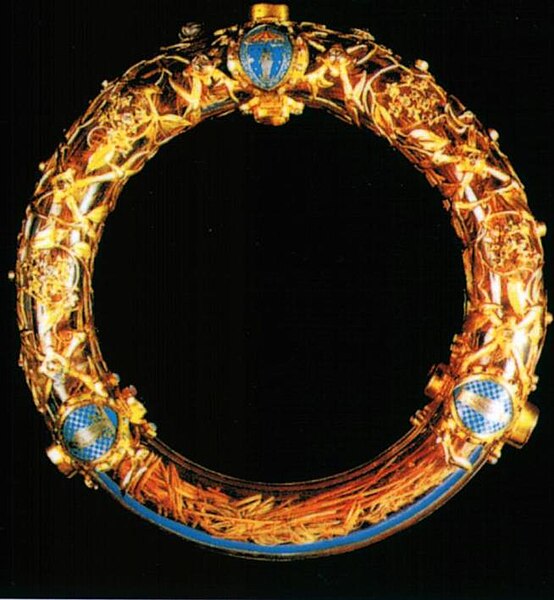Ecce homo are the Latin words used by Pontius Pilate in the Vulgate translation of the Gospel of John, when he presents a scourged Jesus, bound and crowned with thorns, to a hostile crowd shortly before His crucifixion. The original New Testament Greek: "ἰδοὺ ὁ ἄνθρωπος", romanized: "idoù ho ánthropos", is rendered by most English Bible translations, e.g. the Douay-Rheims Bible and the King James Version, as "behold the man". The scene has been widely depicted in Christian art.
Ecce Homo, Caravaggio, 1605
Version by a follower of Hieronymus Bosch, 1490s
Ecce Homo, Andrea Mantegna, 1500
Ecce Homo by Titian, between c. 1570 and c. 1576
According to the New Testament, a woven crown of thorns was placed on the head of Jesus during the events leading up to his crucifixion. It was one of the instruments of the Passion, employed by Jesus' captors both to cause him pain and to mock his claim of authority. It is mentioned in the gospels of Matthew, Mark and John, and is often alluded to by the early Church Fathers, such as Clement of Alexandria, Origen and others, along with being referenced in the apocryphal Gospel of Peter.
Christ carrying the cross with the crown of thorns, as painted by El Greco, c. 1580s
A purported relic of the Crown of Thorns, received by the French King Louis IX from Emperor Baldwin II.
Nuremberg 16th-century silver medal of Jesus Christ with a crown of thorns by Valentin Maler.
Christ Carrying the Cross by Andrea Solario, 1513, portrays the crown of thorns








